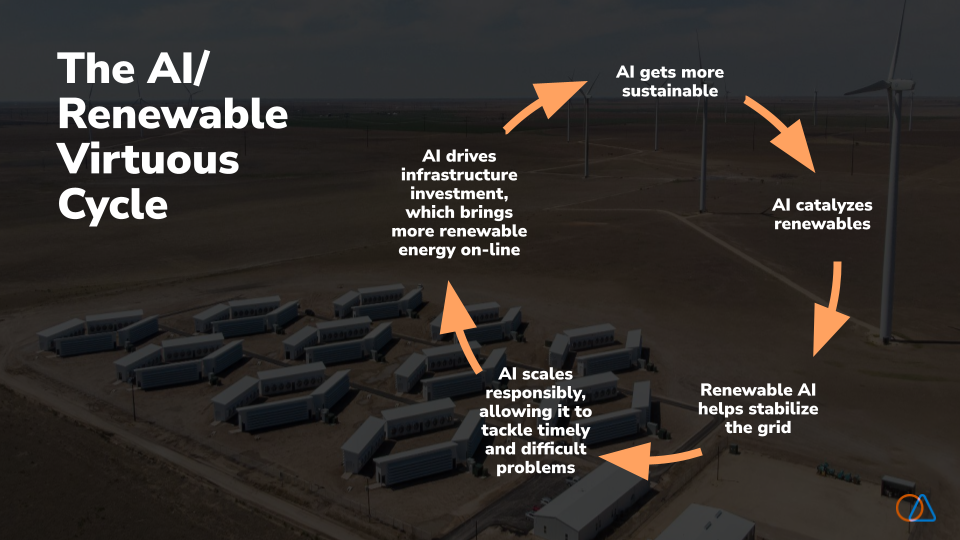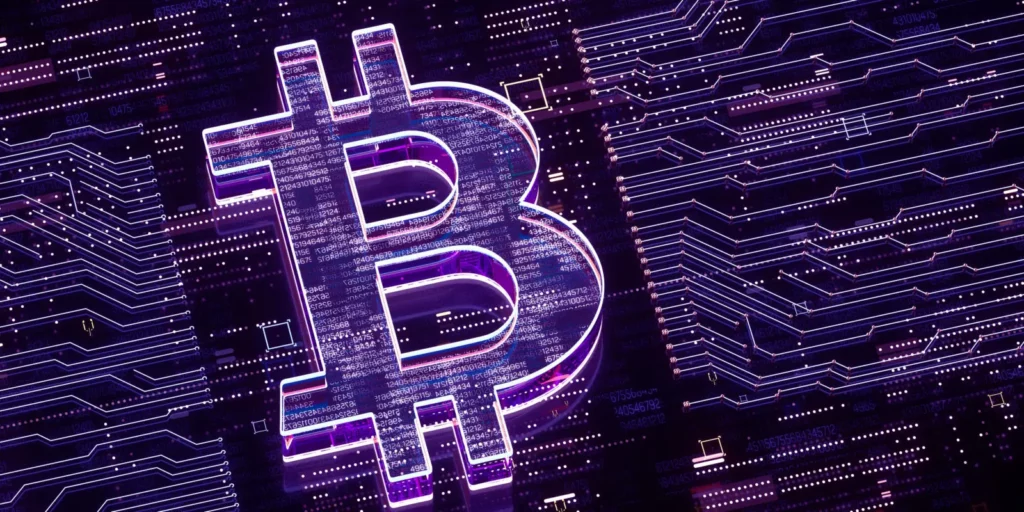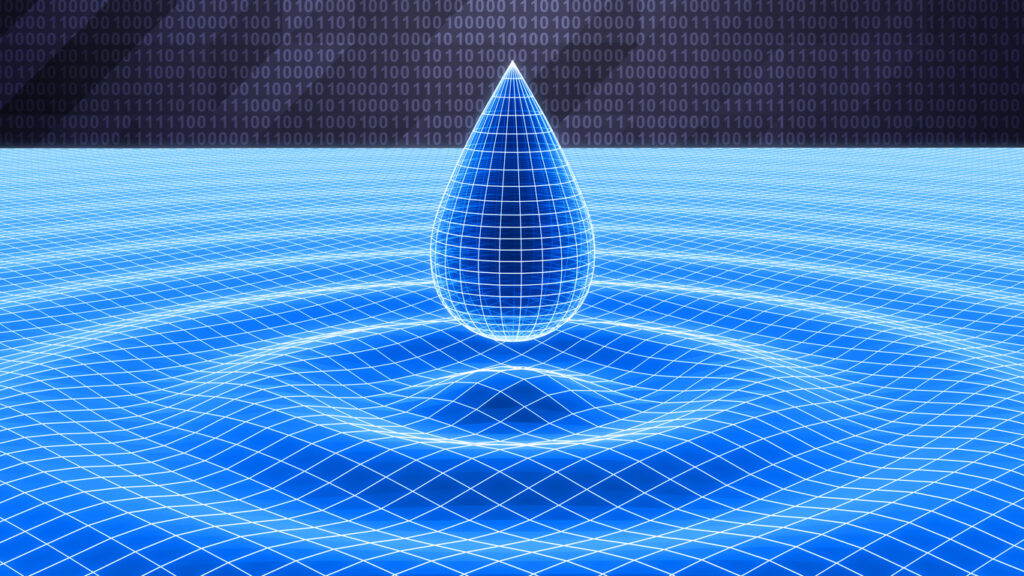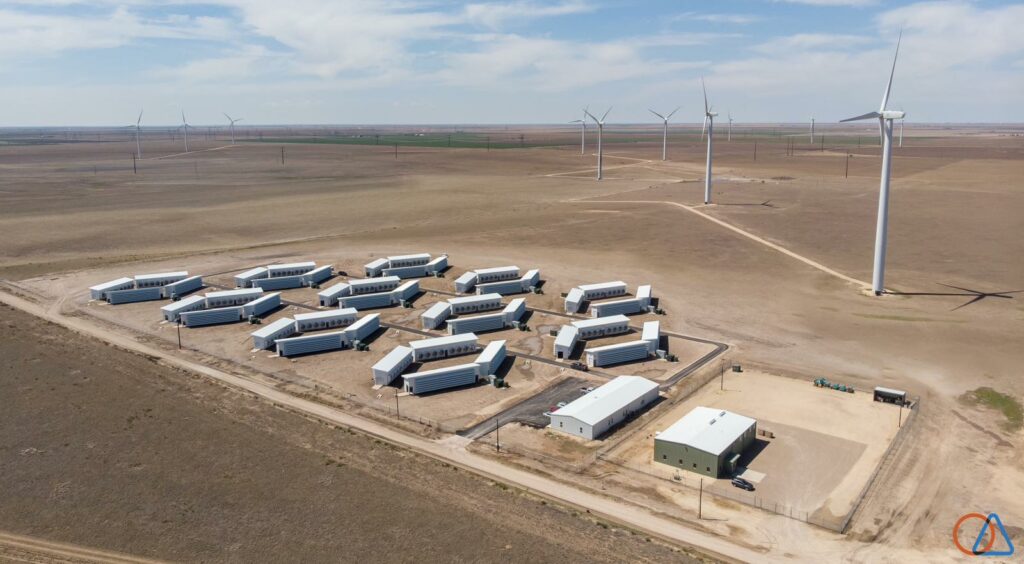In 1996, former Intel CEO Andrew Grove gave a keynote address that redefined the PC and changed the course of telecommunications. Personal computers were still largely viewed as individual productivity tools, but Grove believed they could be more than just a spreadsheet or a word processor. Grove envisioned a “connected PC” that could cross the boundaries of time and space. He envisioned combining two innovations – personal computing and telecommunications – into one.
These moments, when two diverse concepts converge into a single solution, are known as convergent innovation or just convergence. It’s a process that often results in the creation of disruptive technologies.
AI meets energy
AI and energy are often pitted against one another. As generative AI has taken off at an accelerated pace (a $8.2 billion market in 2021 predicted to reach $126.5 billion by 2031), AI’s energy demands have skyrocketed. (See here, here, or here.)
Reports remain conflicted on whether the AI boom poses existential threats to the energy grid or the climate. A recent report from real estate services company JLL found that while the U.S. colocation data center market has doubled in size over the last four years, “the U.S. power grid is not in danger of running out of capacity in the near term.” Others are more wary.
What we do know is that AI consumes prodigious amounts of energy. And yet, a plethora of use cases of AI can also be utilized in pursuit of climate solutions. From wildfire detection to grid planning, companies are capitalizing on AI’s capabilities to automate processes, map the existing landscape, and hone in on the right solutions. A report from Morgan Stanley earlier this month even suggested that a rise in data centers could incentivize a corresponding investment in carbon removal.
Soluna believes that the AI boom itself might be a catalyst for the energy transition.
Renewable computing
Soluna exists to address two key challenges: renewable energy’s wasted energy problem, and AI’s energy consumption problem.
Renewable energy suffers from intermittency, which can result in a mismatch between generation and demand. These mismatches can, in turn, lead to stranded or curtailed energy, when IPPs are forced to pause operations because there is insufficient demand to make generation profitable — or else waste the energy altogether. Soluna research has found that 30-40% of energy produced by renewable IPPs in the U.S. goes unused. IPPs need a way to monetize this unprofitable resource.
Meanwhile, an explosion in AI over the last several years has resulted in the proliferation of AI-focused data centers and accompanying load growth. A May Electric Power Research Institute report found that U.S. data centers used 150 million megawatt hours in 2023. We need a way to meet this surge of energy demand sustainably.
Soluna’s edge
At Soluna’s Project Dorothy in Texas, Soluna data centers can consume around 50% of all energy curtailed by the co-located wind farm. The otherwise wasted, unprofitable energy can fuel operations requiring massive energy.
Soluna’s new Helix data centers are specifically designed for Generative AI and other batchable loads, with direct liquid cooling, zero water, and a scalable structure.
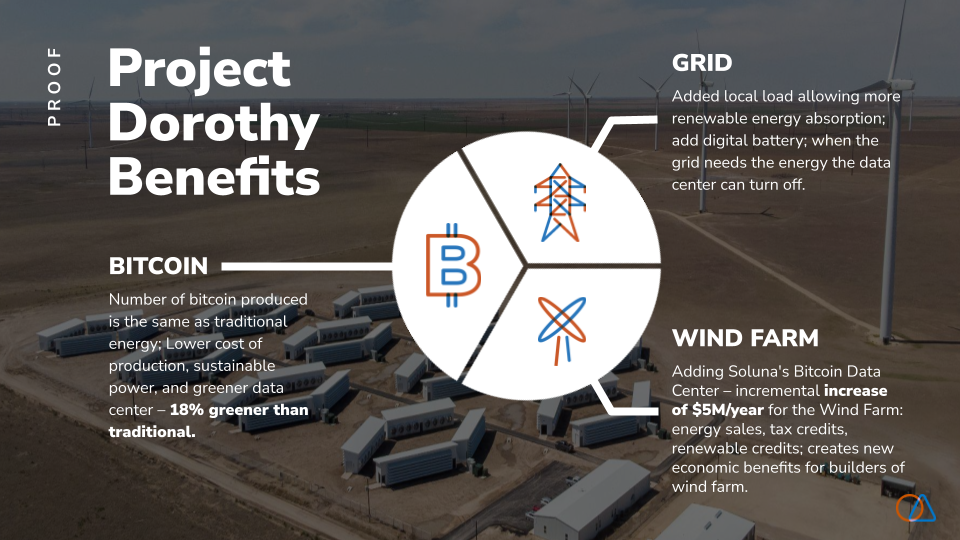
With renewable computing, Soluna can create a virtuous AI-energy cycle — an operating example of convergent innovation.
